Exhibit: Santa Barbara Asian American & Pacific Islander Heritage, 1870s-1970s
Frank Mitsugu Fujii (1917-2016)
Creator of the Japanese Garden at Lotusland
By Kate Lima
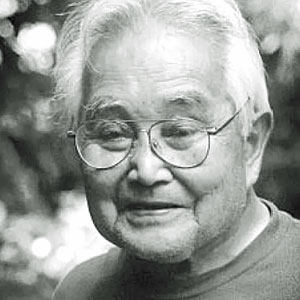
Frank Fujii (Photo credit: Santa Barbara Independent)
Frank Mitsugu Fujii was a quiet man, one who was devoted to his family. He also devoted his life to creating tranquility and beauty in the form of a garden.
Frank was born on October 25, 1917, in Salt Lake City, Utah. His father, Kintsuchi Fujii, was born in Kudamatsu, Yamaguchi, Japan in 1875 where he was trained as a carpenter. He came to the United States in 1904 as part of a team hired to build a Japanese garden for an expo in San Francisco. Kintsuchi then traveled the country doing various jobs; one of those jobs was in 1905 when he ran a pool hall on lower State Street in Santa Barbara. Kintsuchi returned to Japan in 1915 where he met his wife, Tatsu, and the two returned to the states in 1917. Son Frank was born shortly after, and in 1927 they settled in Santa Barbara. Frank’s brother Robert was born at St. Francis Hospital in 1929.
The Fujiis were one of the early Japanese families to reside in Santa Barbara. Kintsuchi arranged to build a Japanese garden for a family that owned property on the Mesa in exchange for leasing land to start a farm. They grew strawberries and freesias. In the late 1920s people from all over the South Coast drove to the Mesa; it was a beautiful, rural area of grassland and had an extensive oak grove dating from the 1700s. People also visited the area to see the lovely freesias.
Kintsuchi gained a clientele of some of Santa Barbara’s elite, creating and maintaining the gardens on their estates. One of Kintsuchi’s greatest gardens is still thriving today: the Storrier Stearns Japanese Garden in Pasadena. The garden was created by Kintsuchi between 1935-1940 for Charles and Ellamae Storrier Stearns. As Kendall Brown states in his book, California Japanese-style Gardens, “this is the genius of Kinzuchi [sic] Fujii: this was once a flat area of two tennis courts; now it is a masterwork.”
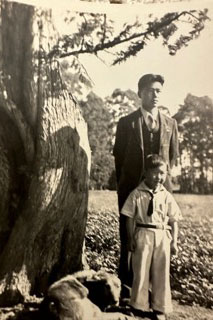
Frank (back) and Bob (front) on the farm on the Mesa 1930s (Courtesy of Roberta Cook)
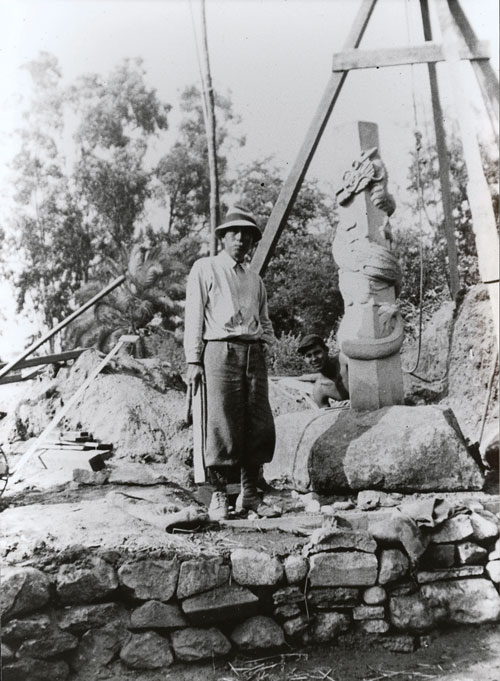
Kintsuchi Fujii supervises the installation of sculpture at the Storrier Stearns mansion, 1937 (Photo credit: Storrier Stearns Japanese Garden)
Like his father Kintsuchi, Frank was a garden designer. Designing a Japanese garden involves interpreting the features of land, altering these features, choosing rocks, stonework, and plants that accentuate the land, and understanding how the growth of the plants would change the appearance of the garden over time. Frank took over the management of his father’s business when he was a senior in high school because of an accident that left his father unable to work. Frank supported his parents for the rest of their lives.
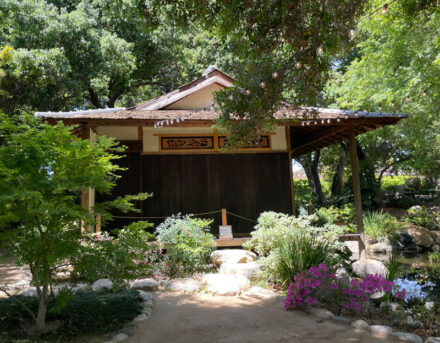
Storrier Stearns Japanese Garden (Courtesy of Melinda Yamane Crawford, 2023)
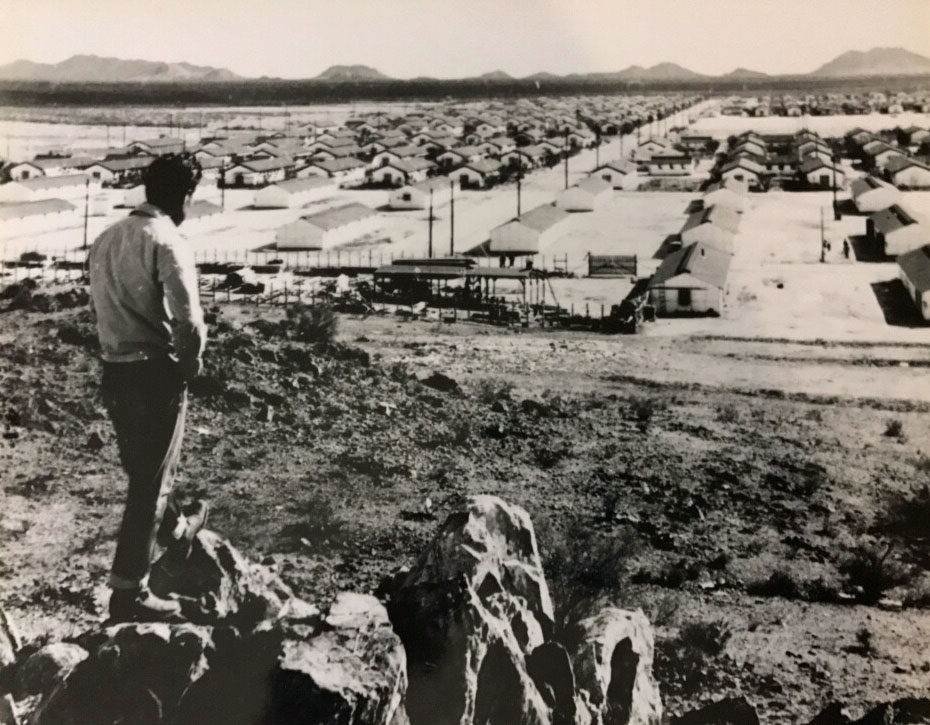
Frank Fujii looking out the Butte Camp at the Gila River Internment Camp in Arizona (Courtesy of Roberta Cook)
Frank had attended a one-room school on the Mesa in the late 1920s, then attended Santa Barbara Junior and Senior High Schools. He went on to study at Santa Barbara College (UCSB) on the Riviera. Frank loved his sports, playing for the Gauchos in basketball, baseball and track. At one point he hoped to become an engineer, but chose to help his father and continue the work of beautifying the world. He grew to love this work.
When Frank was 27 the United States entered World War II. At this time he and his family were forced to “relocate” to the Gila River War Relocation Center in Arizona. Kintsuchi was taken separately by authorities and detained at the Tuna Canyon Detention Facility in Tujunga. He later joined the family in Gila. The family was interned for four years, though Frank was allowed to leave for Idaho to harvest potatoes and also Chicago to do welding on tanks for the war effort. He later returned to the camp.
Unlike many other interned Japanese families, the Fujiis were able to return to Santa Barbara. Frank returned first and stayed at the Buddhist Church on Canon Perdido Street along with other recently released internees. The Church was used as a hostel until people could get jobs and find a place to live. Frank found employment with Kemper Williams in Montecito and he sent for his parents and brother to live on the estate. Kintsuchi, Frank and Bob built a “gardener’s cottage” on the back portion of the estate.
Within a few years Frank met Dorothy Nomura and they married in 1952. They were blessed with three daughters: Roberta, Melanie, and Doreen.
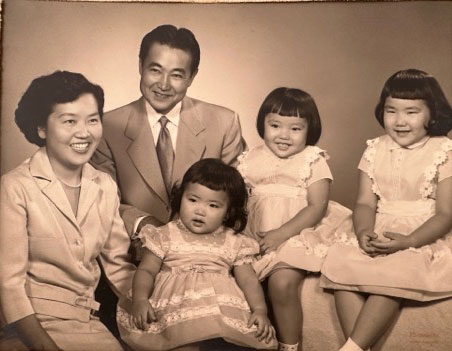
Frank and Dorothy Fujii family early 1960s. From left: Dorothy, Frank, Doreen, Melanie and Roberta (Courtesy of Roberta Cook)
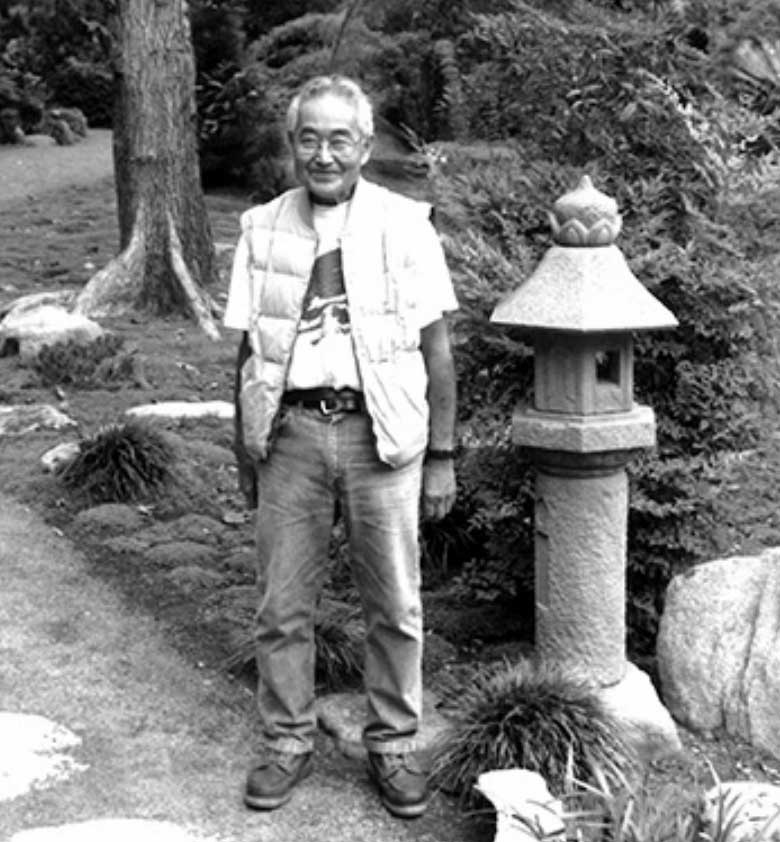
Frank Fujii at Lotusland (Photo credit: Santa Barbara Independent)
Frank started working part-time at Madame Ganna Walska’s Lotusland while still employed at the Williams’ estate. When Madame wanted to create a Japanese garden, she shared her vision with Frank, as well as Oswald Da Ros. In 1972 Madame asked Frank to become a full-time steward of the Japanese garden.
Frank worked at Lotusland for over 30 years until he was 90 years old. He and Dorothy were married for 64 years when Frank passed away in September of 2016 at 98. He was blessed to know his granddaughters before he passed away. Dorothy still lives, and she dotes on both her granddaughters and now a great-granddaughter, born on her 99th birthday.
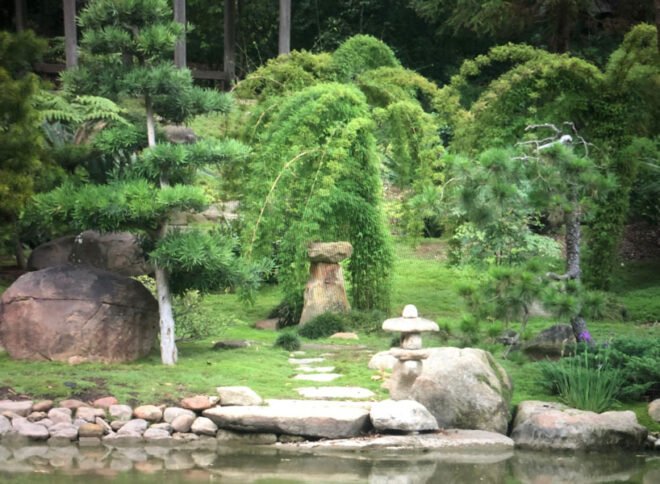
Lotusland Japanese Garden (Photo credit: Terri Clay)
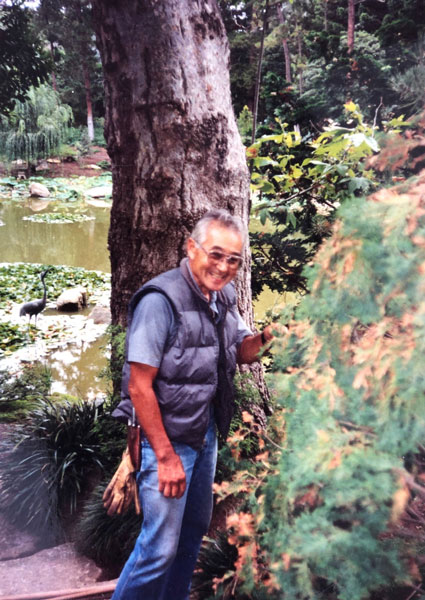
Frank Fujii at Lotusland Japanese Garden (Photo credit: Terri Clay)
